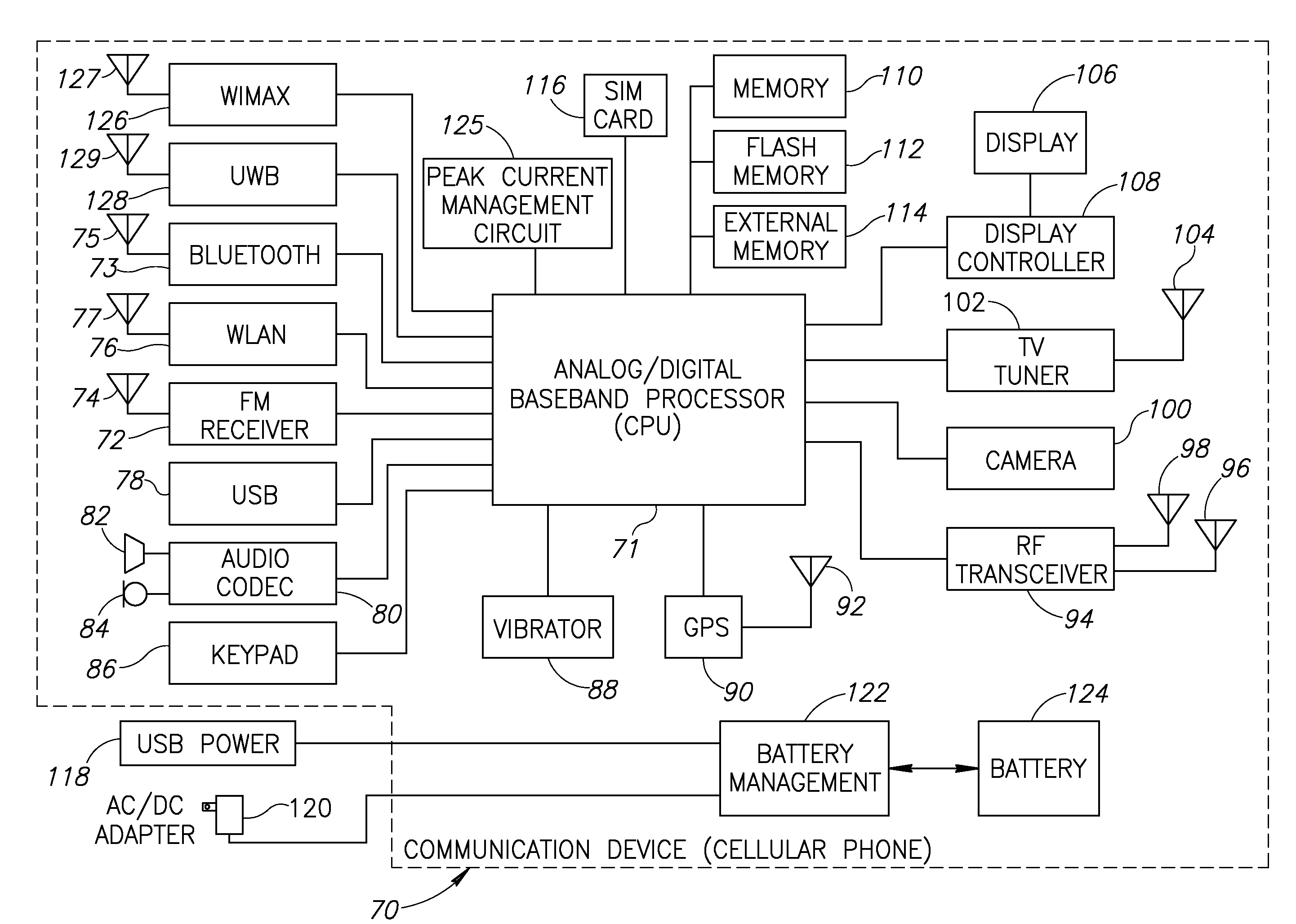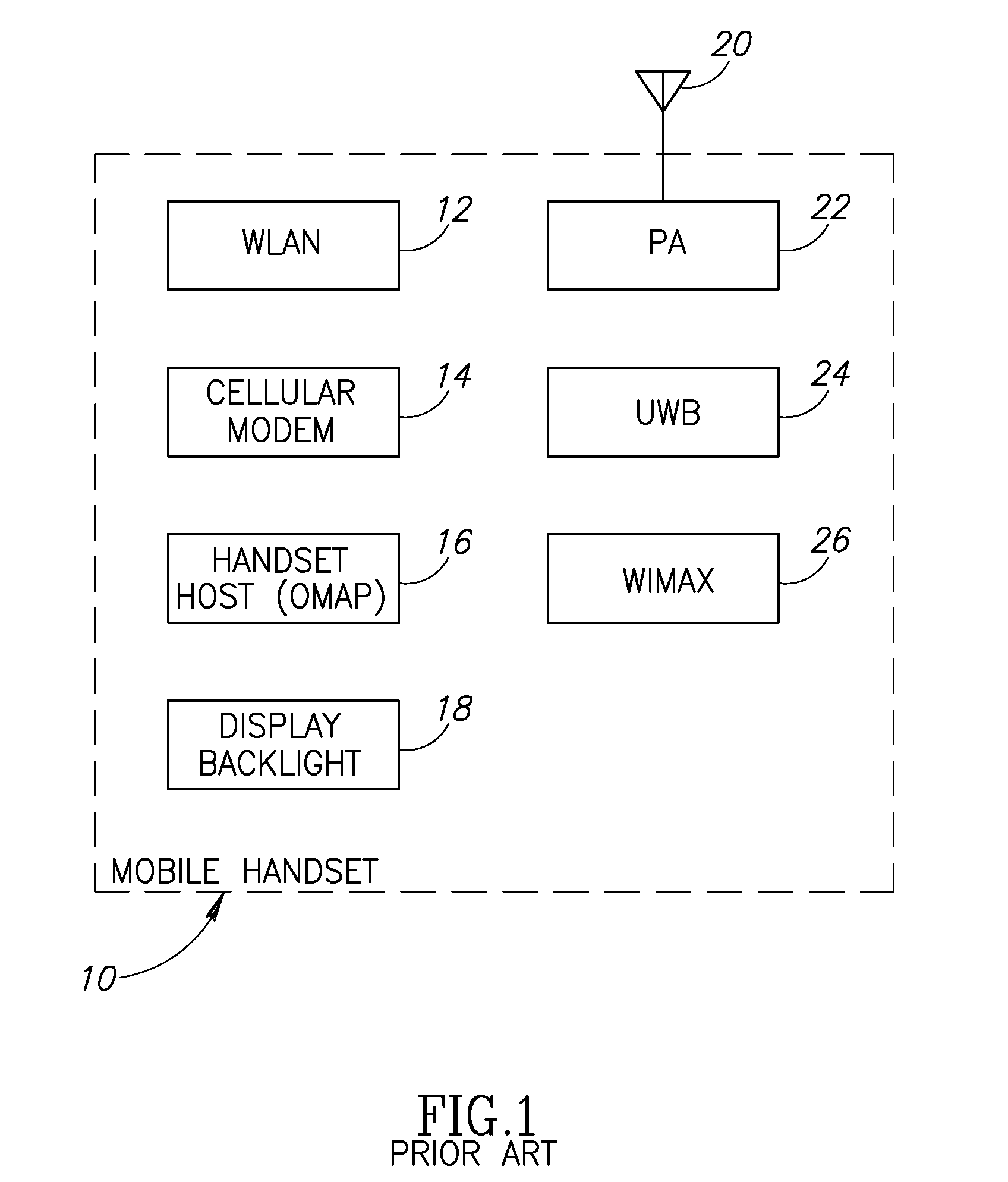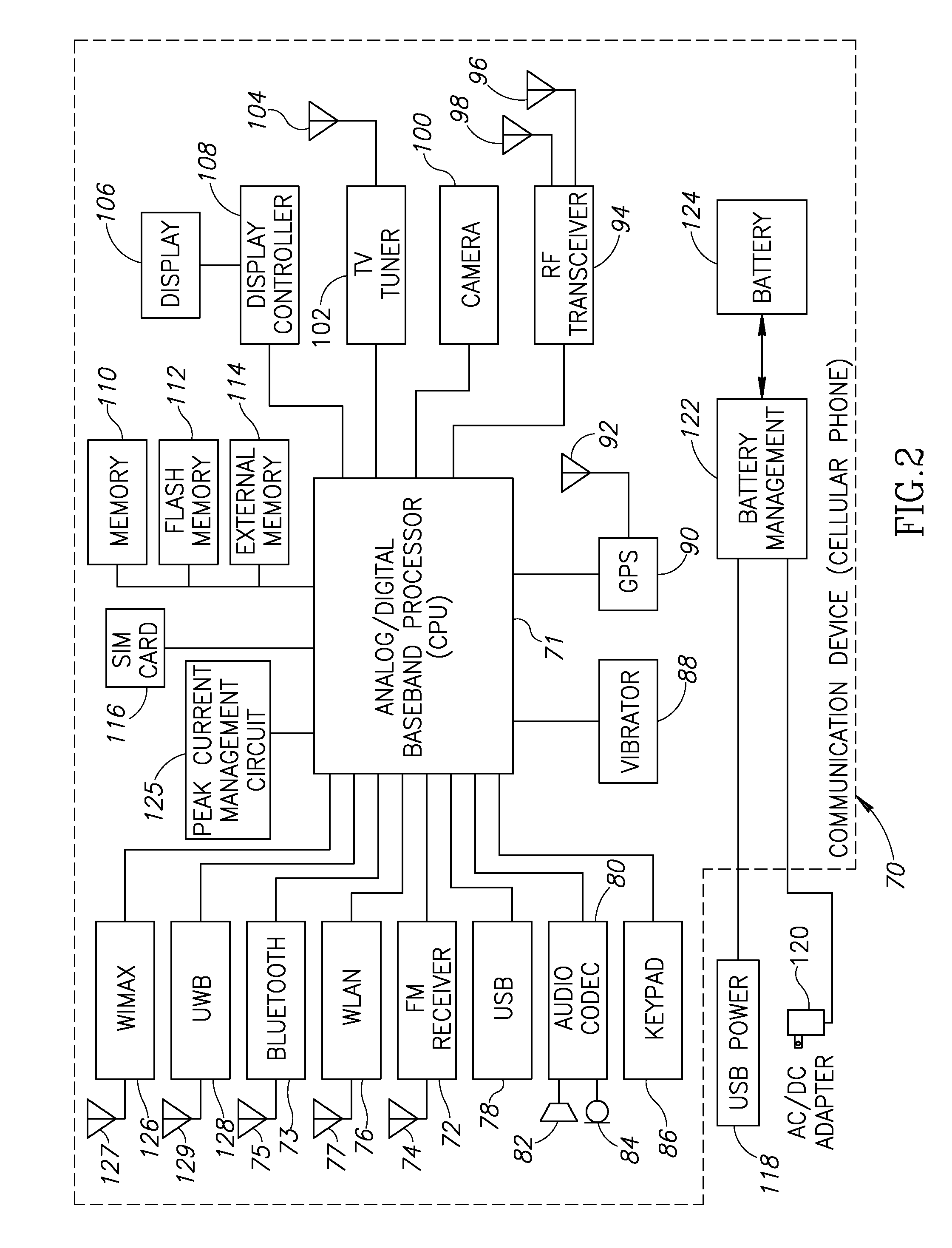Apparatus for and method of managing peak current consumption of multiple subsystems in a mobile handset
a mobile handset and subsystem technology, applied in the field of data communication, can solve the problems of increasing the complexity of the design of the power module that supplies power to the entire handset, affecting the performance of the handset, and the subsystems operating in bursts
- Summary
- Abstract
- Description
- Claims
- Application Information
AI Technical Summary
Benefits of technology
Problems solved by technology
Method used
Image
Examples
first embodiment
unication Device
[0045]A block diagram illustrating a first embodiment of the peak current consumption management mechanism of the present invention is shown in FIG. 3. The communication device, generally referenced 30, comprises a plurality of peak power consuming subsystems 34, labeled power consuming subsystem #1 through #N, a controller / arbitrator 32, power management module 31 and battery 33. The communication device may comprise a mobile handset, non-mobile device or any other device that incorporates a plurality of current consuming subsystems whose peak current demands would otherwise overlap and possibly exceed the peak current handling capacity of the power management module.
[0046]In accordance with the mechanism of the present invention, the power consuming subsystems advertise their intent to initiate a current peak in advance. A subsystem advertises its intent by asserting its respective request (REQ) line 36. The N request lines are input to the controller / arbitrator wh...
second embodiment
thout Rescheduling
[0052]A block diagram illustrating a second embodiment of the peak current consumption management mechanism of the present invention is shown in FIG. 4. This second embodiment implements the first control scheme described supra. It is a specific implementation example of the general arbitration scheme of FIG. 3 for a mobile handset comprising a WLAN, cellular and display backlight subsystems. The system, generally referenced 40, comprises a cellular / WiMax subsystem 46, WLAN subsystem 48, display backlight 51, backlight controller 50, cellular TX power amplifier (PA) 44, WLAN TX power amplifier 45 and antennas 42, 43.
[0053]In operation, cellular modem (i.e. radio) transmissions are signaled to the WLAN subsystem via the CELL_TX_REQ signal line 54. When a notification is received by the WLAN subsystem that the cellular radio intends to transmit, the WLAN subsystem is operative to block itself from transmitting during transmissions of the cellular radio. Cellular radi...
third embodiment
ith Rescheduling
[0057]A block diagram illustrating a third embodiment of the peak current consumption management mechanism of the present invention is shown in FIG. 7. This third embodiment implements the second control scheme described supra. It is another specific implementation example of the general arbitration scheme of FIG. 3 for a mobile handset comprising a WLAN, cellular and display backlight subsystems. The system, generally referenced 150, comprises a cellular / WiMax radio subsystem 160, WLAN subsystem 164, backlight subsystem 168, cellular TX power amplifier (PA) 154, WLAN TX power amplifier 155 and antennas 152, 153. The backlight subsystem 168 comprises display backlight 174 and backlight controller 170.
[0058]In operation, cellular modem (i.e. radio) transmissions are signaled to the WLAN subsystem via the CELL TX REQ signal line 162. When a notification is received by the WLAN subsystem that the cellular radio intends to transmit, the WLAN subsystem is operative to blo...
PUM
 Login to View More
Login to View More Abstract
Description
Claims
Application Information
 Login to View More
Login to View More - R&D
- Intellectual Property
- Life Sciences
- Materials
- Tech Scout
- Unparalleled Data Quality
- Higher Quality Content
- 60% Fewer Hallucinations
Browse by: Latest US Patents, China's latest patents, Technical Efficacy Thesaurus, Application Domain, Technology Topic, Popular Technical Reports.
© 2025 PatSnap. All rights reserved.Legal|Privacy policy|Modern Slavery Act Transparency Statement|Sitemap|About US| Contact US: help@patsnap.com



